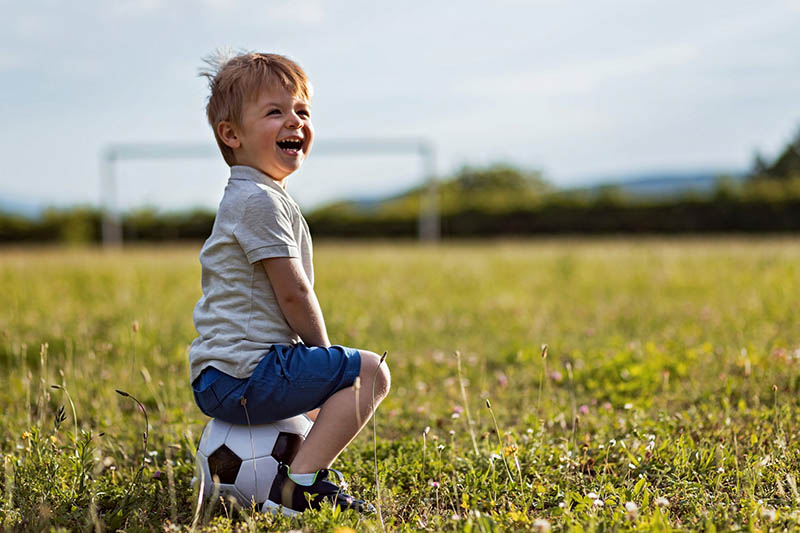What are the Most Common Playground Injuries?
Playgrounds provide children with time to play, exercise, make new friends and enjoy some fresh air. But anyone who has children knows that fun at the playground can come with bumps, scrapes and bruises. And, unfortunately, playground fun can result in more severe injuries.
Playground injuries are inevitable because children fall while running or lose their grip or balance. Some of the more serious playground injuries are caused by a fall from the monkey bars. Younger children don’t have good upper arm strength and can easily slip and fall. They naturally protect themselves by falling on an outstretched hand and then break the bones in the forearm or elbow. Standing or jumping off a swing or getting a foot caught while going down the slide are other causes of common playground injuries. These injuries can include fractures, sprains and strains, broken bones, dislocations and concussions.
Signs of a break include hearing a snap upon injury, swelling, bruising, difficulty or pain when moving or to the touch. If a child is experiencing any of these symptoms, first-aid treatment can provide comfort, help reduce swelling and provide pain relief. Don’t move the limb. It’s best to do the following until seeking medical treatment:
- Remove clothing from the area
- Give pain relief like ibuprofen
- Reduce movement of the injured area if possible by applying a splint or sling
- Apply an ice pack to the injury
- Elevate the limb
Treatment for Broken Bones
Fractures:
Fracture is the term used for a broken bone. Fractures are a common childhood injury because young children have bones that are growing and not yet fully developed. Fractures can occur in any bone of the body, but the most common fracture injuries in children are wrists, arms and elbows, which usually occur after a fall. Most fractures heal well and cause no long-term complications. Depending on the extent of the injury, treatment for broken bones varies. Fractures are usually treated by using a splint, or a partial or full cast to restrict movement to allow the bone to heal. A splint or backslab (partial cast) helps to support the injured area, allowing it to rest and heal while also providing your child pain relief. A splint or partial cast generally does not have to be worn for as long as a full cast. Full casts are required for three weeks to three months depending on the type and location of the injury – your child’s orthopedist can estimate how long your child will be required to heal. If the injury has caused the bones to move out of place, surgery will be needed to move the bones back into the correct position. Known as “reduction,” this procedure is usually done under sedation or anesthesia. Often with surgery, the orthopedists will place a full plaster cast to allow the injury to heal.
Another type of fracture caused by a playground injury is an accidental spiral fracture of the tibia or shinbone often called a “toddler fracture.” A spiral fracture is common in preschool children who fall short distances onto an extended leg, twist the leg while walking or running, or get their foot caught while on a slide. Most tibia fractures in children can be treated in a cast or a boot.
Looking after the cast is important to ensure your child’s bone heals correctly and to prevent damage to their skin. Keep the cast clean, dry and away from lotions and powders.
Sprains:
A sprain is a stretching or tearing of ligaments. Ankle sprains are one of the most common injuries in children. Rest, ice, compression and elevation are good at-home treatments. Seek medical advice from a pediatric orthopedist if the pain from your child’s ankle has not improved after a few days. Immobilization with a foot brace and physical therapy may be necessary.
Dislocations:
A dislocation happens when extreme force is put on a joint causing the ends of two bones to come apart. Although uncommon in playground injuries, occasionally, we see an elbow dislocation that is generally treated in the ER.
Playground Equipment
According to a 2021 report by the Centers for Disease Control and Prevention, United States emergency rooms treat upwards of 200,000 children under the age of 14 years old every year because of mishaps on a playground. Malfunctioning equipment is often to blame for the vast majority of playground accidents at public parks, schools and daycare centers. Equipment becomes much more dangerous as it ages or when it is not maintained correctly. Some of the injuries have been mitigated over the years by playground equipment manufacturers: remediations such as lowering the height of equipment to a recommended six feet and replacing hard surfaces with proper landing mulch or rubber are good steps in alleviating injuries.
Specialists in Pediatric Fractures and Injuries
The Pediatric Orthopedic Center is a top-rated practice with locations in Cedar Knolls, Springfield and Wayne. We specialize in pediatric fractures, sprains and other acute orthopedic injuries. Learn more about our pediatric orthopedic practice on our website or book an appointment at (973) 538-7700 if your child has been injured at the playground and needs the attention of our award-winning specialists and staff.



